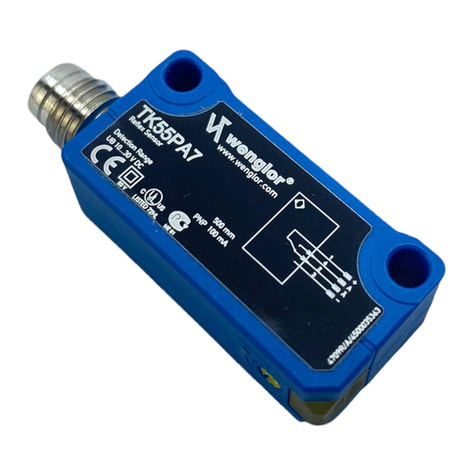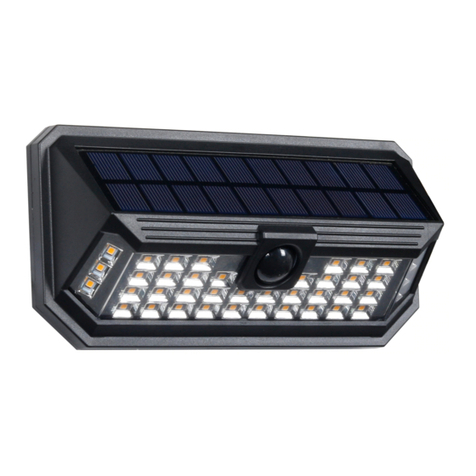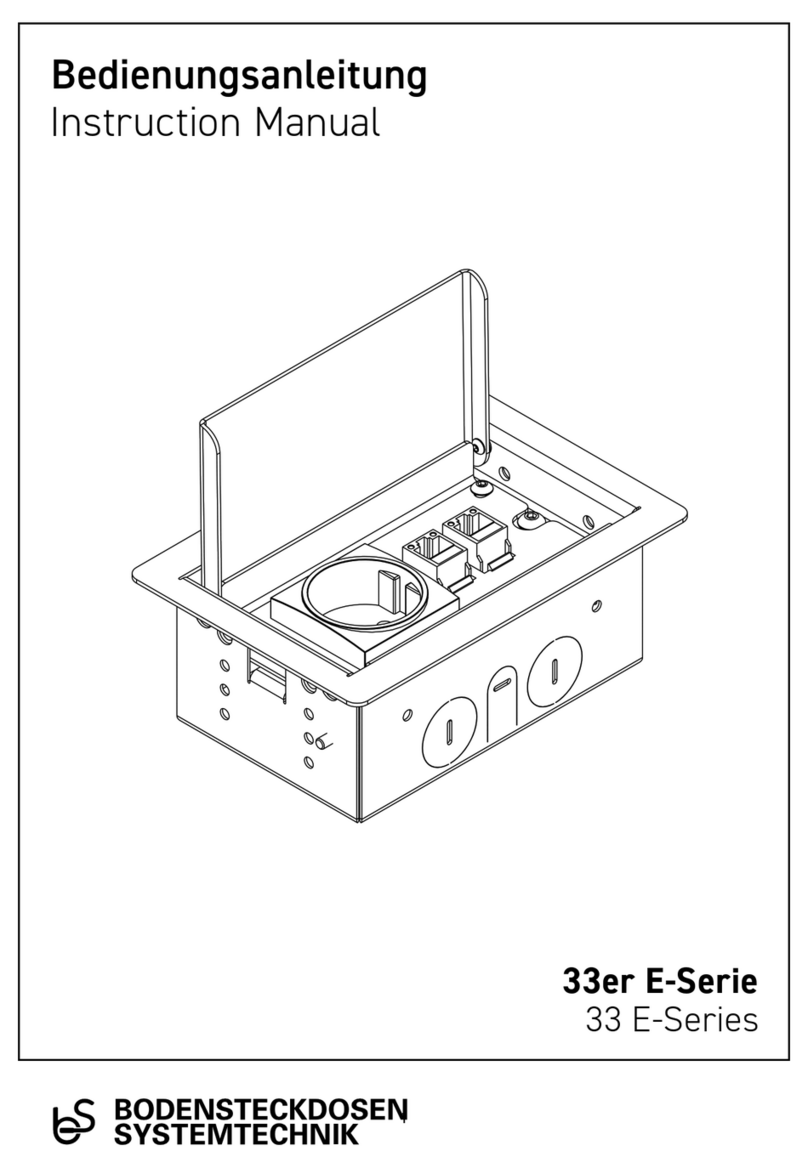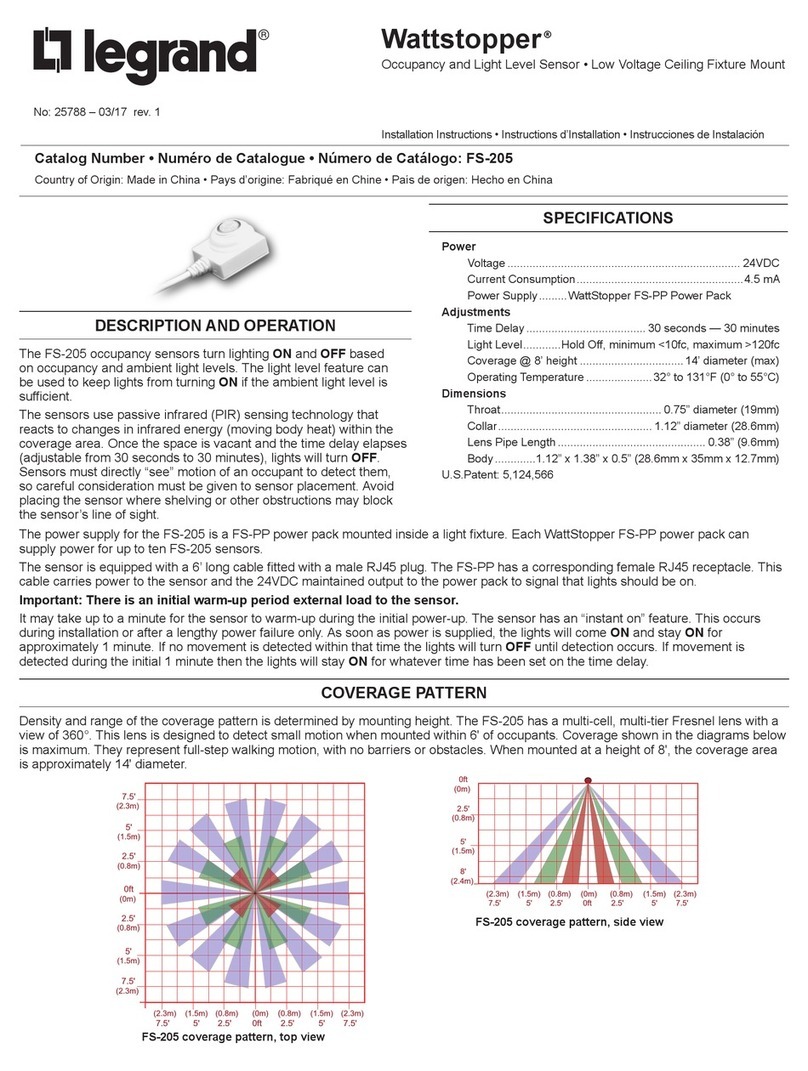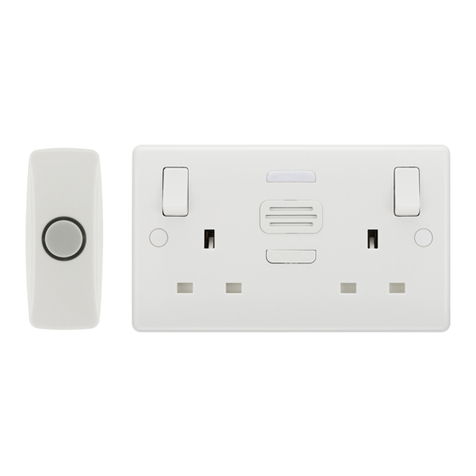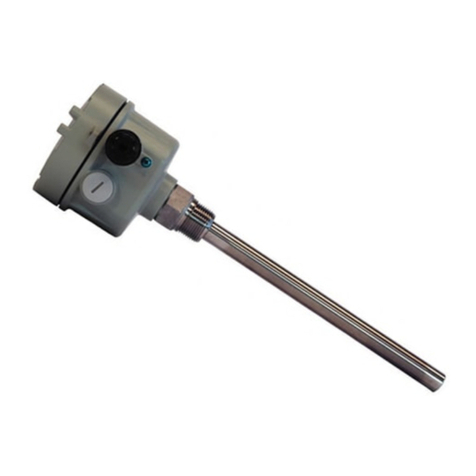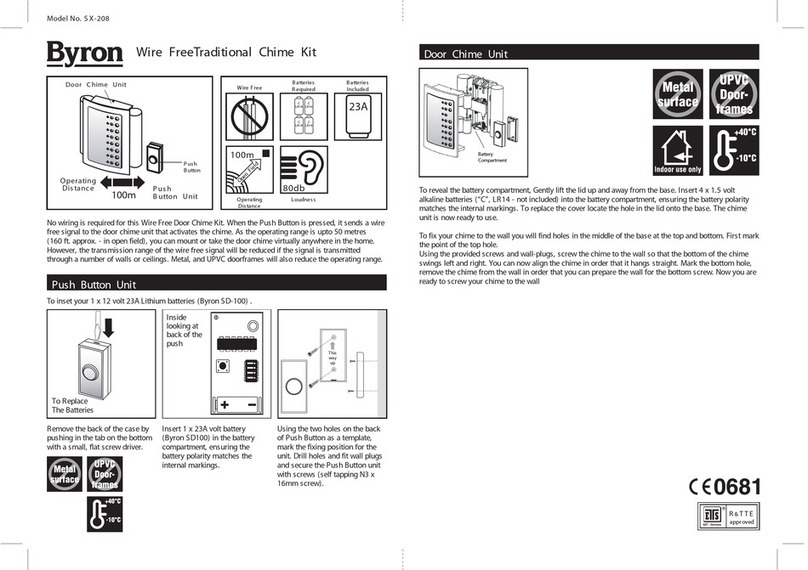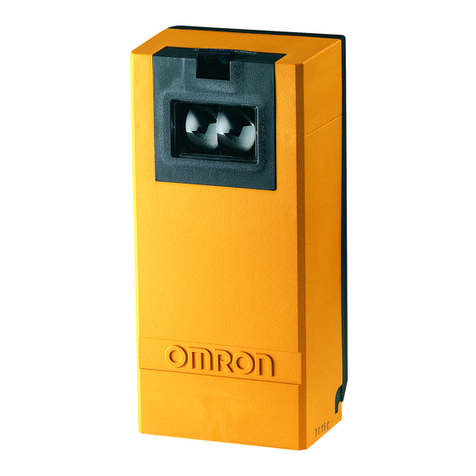Noptel CM3 Quick guide

CM Distance Sensors
Configuration and API Guide

____________________________________________________________________________________
____________________________________________________________________________________
CM Configuration and API Guide Page 2/60

____________________________________________________________________________________
____________________________________________________________________________________
CM Configuration and API Guide Page 3/60
Contact information
Noptel Oy
Address: Teknologiantie 2
FI-90590 Oulu
Finland
Tel.: +358 40 181 4351
Fax: +358 8 556 4101
Technical support: Web site: www.noptel.fi
Downloads:
Documents :
http://www.noptel.fi/eng/nms/index.php?doc=7_downloads/5_manuals
Software:
http://www.noptel.fi/eng/nms/index.php?doc=7_downloads/7_software
Firmware:
Document Information :
Document Title: CM Distance Sensors Configuration and API Guide
Document Version: 1.10
Released: 11.10.2018
Current printing 11.10.2018
Document ID: N42119CE
Document Status: Release
Firmware version CM3: 0.32.x2 (CM3 and CMP3)
Firmware version CM5: 3.06.22 (CM5, CMP51 and CMP52)
Copyright Notice:
Specifications and implementation subject to change without notice due to continuous
research and development.
Copyright © 2016 Noptel Oy, Oulu, Finland

____________________________________________________________________________________
____________________________________________________________________________________
CM Configuration and API Guide Page 4/60
1INTRODUCTION TO THE CM DISTANCE SENSORS ............................................6
1.1 INTRODUCTION.............................................................................................................6
1.2 COMMUNICATION PROTOCOL.........................................................................................6
1.3 COMMANDS IN CONFIGURATION MODE...........................................................................7
2OPERATION MODES.............................................................................................10
2.1 LIST OF OPERATION MODES.........................................................................................10
2.2 OUTPUT AT STARTING OF THE OPERATION MODE ..........................................................12
3DISTANCE MEASUREMENTS...............................................................................13
3.1 ASCII MODE..............................................................................................................13
3.1.1 ASCII format of the distance measurement..........................................................13
3.2 BINARY FORMAT OF THE DISTANCE MEASUREMENT.......................................................14
3.2.1 Centimeter output format (2–3 bytes)...................................................................14
3.2.2 Extended centimeter output format (3–4 bytes)....................................................15
3.2.3 Millimeter output format (3–4 bytes).....................................................................16
3.3 CONTINUOUS BINARY MODE ........................................................................................17
3.4 BINARY MODE,HW CONTROLLED ................................................................................18
3.5 BINARY MODE,SERIAL CONTROLLED............................................................................19
3.6 CAPTURE MODE,HW CONTROLLED .............................................................................21
3.7 CAPTURE MODE,SERIAL CONTROLLED.........................................................................21
3.8 SYNCHRONIZED BINARY MODE FOR CM(P)5X..............................................................22
4SPEED MEASUREMENTS.....................................................................................24
4.1 SPEED MEASUREMENT MODE WITH TWO SENSORS........................................................24
4.1.1 Vehicle length and height.....................................................................................26
4.1.2 Output format.......................................................................................................27
4.1.2.1 Result............................................................................................................................27
4.2 SPEED MEASUREMENT MODE WITH ONE SENSOR..........................................................28
4.2.1 User’s control over the speed calculation .............................................................32
4.2.2 Adaptive measurement window for departing vehicles.........................................32
4.2.3 Vehicle profile data...............................................................................................34
4.2.4 Automatic distance setting of measurement window ............................................34
4.3 CONTINUOUS SPEED MODE.........................................................................................35
4.4 SIZE MODE.................................................................................................................36
4.5 MULTILANE SPEED MEASUREMENT MODE .....................................................................36
5DETECTION MODES .............................................................................................39
5.1 TRIGGER WINDOW MODE.............................................................................................39
5.1.1 In window and Out of window triggering...............................................................40
5.1.2 Trigger count and timing information....................................................................41
5.1.3 Profile measurement............................................................................................41
5.2 MOVEMENT TRIGGER MODE.........................................................................................42
6TROUBLESHOOTING............................................................................................44
6.1 ERROR TABLE ............................................................................................................44
6.2 EXPLANATIONS OF THE ERROR CODES.........................................................................44
6.3 SELF-TEST ERRORS....................................................................................................45
6.4 ERRORS DURING MEASUREMENT.................................................................................46
7PARAMETERS .......................................................................................................47
7.1 USER PARAMETER COMMANDS....................................................................................47
7.2 PERMANENT MEMORY PARAMETERS ............................................................................49
7.3 PARAMETER LIST........................................................................................................49
7.4 CONTROL BYTE 1.......................................................................................................55

____________________________________________________________________________________
____________________________________________________________________________________
CM Configuration and API Guide Page 5/60
7.5 CONTROL BYTE 2.......................................................................................................56
7.6 CONTROL BYTE 3.......................................................................................................56
7.7 CONTROL BYTE 4.......................................................................................................57
7.8 CONTROL BYTE 5.......................................................................................................57

____________________________________________________________________________________
____________________________________________________________________________________
CM Configuration and API Guide Page 6/60
1 INTRODUCTION TO THE CM DISTANCE SENSORS
1.1 Introduction
This document presents Configuration and Application programming interface (API) for
CM Distance Sensors. Connections and hardware of the sensors are presented in ”CM3-
30 and CMP3-30 Technical Manual” and “CM5, CMP51, CMP52 and Speeder X1
Technical manual”.
The sensors are suitable for Distance Measurements, Speed Measurements and Target
Detections. Versatile utilization of sensors leads to diverse Configuration and
Parameterization. The document is intended to facilitate the work.
1.2 Communication protocol
Serial connection:
The sensors operate connected to the RS-232 port with baud rates from 1200 up to
115200 Bd or RS-422 port with baud rates from 1200 up to 460800 Bd. The
communication rate of the CM(P)5 family is up to 921600 Bd with RS-422.
The bit stream of serial port consists of:
Data bits
8
Parity
None
Stop bit
1
Flow Control
None
The main commands of the sensor are described in this chapter. The default baud rate is
9600. If the baud rate is not known, the user can reset the baud rate to 9600 by sending
multiple <esc>’s to the serial port, while connecting power on to the sensor.
LAN connection (CM5 family):
LAN connection is based on Lantronix xPico embedded TCP/IP controller. See the
manufacturer documentation for further details.
http://www.lantronix.com/wp-content/uploads/pdf/xPico_UG.pdf
Command protocol is in the form:
<esc>[Device Number]<Command><Value1>,<Value2><cr>

____________________________________________________________________________________
____________________________________________________________________________________
CM Configuration and API Guide Page 7/60
Where
<esc> ASCII code 27
[Device Number] is an option, 1–9 if two or more sensors are connected to a serial port,
Command is a command according to the Chapter 1.3,
<Value1> and <Value2>are parameter No. and values in ASCII format (if needed), and
<cr> is Carriage Return (ASCII code 13).
The controller must be in Configuration Mode (par. #1 = 0) when giving commands. The
character <esc> is used for returning the sensor to the base state.
<esc> has three basic functions:
1. Precedes every command.
2. Deletes wrong command.
3. Returns the Sensor into Configuration Mode.
Echo mode:
The system has two communication modes: echo and no echo. In echo mode the
commands and numbers will be echoed back to allow easier operation with terminal
software. Characters prior <esc> are not echoed. In no-echo mode no characters or
numbers are echoed. The echo mode can be defined by Commands <i>, echo OFF and
<I>, echo ON. These commands will assign bit 1 of Control Byte 2 respectively.
Start-up:
The sensor starts to operate always in the mode according to parameters in the
permanent parameter memory. Parameters are changeable, but before saving
parameters into the permanent memory, user should always test the proper function of
the sensor.
1.3 Commands in Configuration mode
The commands in Configuration mode are as follows:
Command
Description
Answer
c
Measure distance once
Dxxxxx [aaaaa] 1)
C
Measure distance continuously, until next <esc>
Dxxxxx [aaaaa] 1)
Dxxxxx [aaaaa] ....
d
Return error list of the Sensor
Error table, chapter 6.1
G
Reset the Sensor
GOK 2)
H<Value>
Return <Value> count of distance measurement results
(in ASCII format, average parameter used)
HDxxxxx aaaaa 1)
Dxxxxx aaaaa ....
ERRCNT=y
i
Set serial port echo OFF
ECHO OFF
IOK
I
Set serial port echo ON (Capital I)
ECHO ON
IOK
J<0/1>
1 = Continuous laser pulsing ON
0 = Laser pulsing OFF
During laser pulsing trigger output will toggle with each
pulse. Feature can be used to check the accuracy of
1
0

____________________________________________________________________________________
____________________________________________________________________________________
CM Configuration and API Guide Page 8/60
the system time base. The pulse rate is defined by
parameters 4 and 5 (See chapter 7.3)
L<No.>
Read the used value of the parameter No.
Lxxxxx
L
Read all used parameters
L0001 xxxxx
L0002 xxxxx
….
LW<No.>
Read word (16 bits) parameter from location No. and
No.+1
Lxxxxx
M
Use the set measurement mode as defined in
parameter 1.
See Chapters 3, 4 or 5 for explanation of the modes.
MOK
M<No.>
Use measurement mode No.
See Chapters 3, 4 or 5 for explanation of the modes.
MOK
O<0/1>
0 = pointer OFF, 1 = pointer ON
OOK
P<No.>
Read the value in EPROM of the parameter No.
Pxxxxx
S
Save user parameters into the permanent memory
(X must be used before)
SOK
T<No.>,<Value>
Write <Value> to the parameter <No.> (ram)
TOK
TW<No.>,<Value
Write integer <Value> (0-65535) to parameter <No.>
and <No.>+1
TOK
U
Automatic distance setting of measurement window
Sensor guides user
through the process
v (lower case)
Sensor information in the Noptel internal format
V (upper case)
Sensor information in ASCII format (version)
Sensor information 3)
V1
Read voltage, current and temperature measurements
Table 4)
V2
Perform self-test and show its result
OK or
Explanation of the
error see chapter 6.3
V7
Calculate flash checksum of program flash, first value
is calculated and second is original from the memory
xxxxh,xxxx
OK
V9
Send test pulse to Digital In / Digital Out (signal 5)
Pulse to
DIGIN/DIGOUT
X
Enable writing into the permanent memory
WR ENABLE
Commonly used commands in configuring the sensor for applications are light blue.
The end of the line of answer is always <cr><lf>.
1) Distance measurement commands
Commands c and C, return results according to Chapter 3.1. The command H is the same
except Amplitude Output cannot be disabled.
2) Sensor information at Power-up and after Resetting
9600 (Baud Rate)
EEPROM PARAMS RESTORED
CMP3-SENSOR
CMP3003126 RS-UPLOAD PRESENT
Noptel Oy
ParamDate:2006.02.27
Version :0.30.58 69DFh
SW Date :Aug 09 2007
SW time :12:51:12
Ubat :10.3 V
READY!

____________________________________________________________________________________
____________________________________________________________________________________
CM Configuration and API Guide Page 9/60
3) Sensor information <esc>V<cr>
An example of the output for command V:
CMP3-SENSOR
CMP3003126 RS-UPLOAD PRESENT
Noptel Oy
ParamDate:2006.02.27
Version :0.30.58 69DFh
SW Date :Aug 09 2007
SW time :12:51:12
Ubat :10.3 V
OK
The order of lines varies in different firmware versions of the Sensor.
4) Voltage, current and temperature table (table is for diagnostic purposes only)
An example of the output for the command V1 is presented below (units are added):
Description Value Unit (Not in the output)
APD :02212 [0.1V]
RX temp :03222 [0.01°C]
RX Anaout :0156 [mV]
Current :00201 [mA]
VDD :05068 [mV]
VAN :02960 [mV]
VTDC :04845 [mV]
CP temp :02540 [°C]
UBAT :10293 [mV]
UDCDC :0548 [mV]
VRX :05161 [mV]
VOSC :05022 [mV]
VTX :05138 [mV]
VCP :03348 [mV]
TXHV :00257 [V]
TX temp :02311 [0.01°C]
OK

____________________________________________________________________________________
____________________________________________________________________________________
CM Configuration and API Guide Page 10/60
2 OPERATION MODES
2.1 List of operation modes
0 ASCII mode / Configuration Mode (Chapter 3.1)
The Sensor sends measurement results in ASCII format according to the user’s
commands and parameter settings. In this mode the sensor receives commands like
parameter change and state control or operation mode selection.
1 Continuous ASCII mode (Chapter 3.1)
The sensor sends measurement results in ASCII format continuously according to the
parameter settings.
2 Continuous Binary mode (Chapter 3.3)
The sensor sends measurement data in binary format according to parameter settings
until <esc>.
3 Binary mode, HW controlled (Chapter 3.4)
The sensor sends measurement data in binary format according to parameter settings.
The measurement is controlled by the trigger-input-line.
4 Binary mode, serial controlled (Chapter 3.5)
The sensor sends measurement data in binary format according to parameter settings.
The measurement is controlled by serial communication.
5 Trigger window mode (Chapter 5.1)
The sensor controls the measurement results in the trigger window, and according to
parameters it gives trigger-output-signal and sends trigger distance to serial-port. In this
mode the profile of the moving target can also be measured.
6 Speed measurement mode with two sensors (Chapter 4.1)
The sensor works as the second sensor and waits for the trigger-input-signal from the
first sensor. Having received the trigger signal, it waits its own trigger activation and
calculates speed using parameter values.

____________________________________________________________________________________
____________________________________________________________________________________
CM Configuration and API Guide Page 11/60
7 Speed measurement mode with one sensor (Chapter 0)
The sensor waits for the target to be in the trigger window and then starts measuring the
change of distance to the target in the selected window and calculates the speed of the
target.
8 Capture mode, HW controlled (Chapter 3.6)
The sensor records 1000 samples into its memory having been activated by a trigger in
line and after the recording sends the values in ASCII format to the serial line.
9 Capture mode, serial controlled (Chapter 3.7)
The sensor records 1000 samples into storage after activation via the serial
communication line. Results are sent in ASCII format to the serial line.
10 Continuous speed mode (Chapter 4.3)
In this mode the sensor gives speed values whenever it can detect movement in the
measurement range. The target may move into any direction. The mode gives accurate
speed values only if the shape of the target and the measurement geometry do not affect
the measurement. The best measurement results are achieved when the target is far, or
it is followed during the measurement.
11 Size mode (Chapter 4.4)
In this mode the sensor operates in the same way as in Mode 7, but the accurate speed
algorithm is not used. The mode is used to get rough classification data from traffic.
12 Multilane speed measurement mode (Chapter 4.5)
The mode is designed to be used at the side of the road on the level of vehicles. The
mode provides the possibility to catch the speeds of vehicles travelling on more than one
lane.
13 Movement trigger mode (Chapter 5.2)
The feature requires a special firmware which is available on request.
In this mode the sensor gives a trigger when distance to a target changes. For example,
the sensor can trigger to the opening of a door, but does not react to people passing
between the sensor and the door.

____________________________________________________________________________________
____________________________________________________________________________________
CM Configuration and API Guide Page 12/60
2.2 Output at starting of the operation mode
Output of the Sensor after mode command (<esc>M<No.><cr>) are following:
Mode <No.>
Output
0
MOK, no effect
1
MOK
Dxxxxx [aaaaa]
Dxxxxx [aaaaa] ....
2
MOK
(Binary format distances)
3
MOK
HW BINARY MODE
ESC to EXIT
4
MOK
RS BINARY MODE
ESC to EXIT
5 (example)
MOK
TRIGGER MODE
TRIG IN 500–550 cm
ESC to EXIT
6 (example)
MOK
TWO DEVICE SPEED MODE
TRIG IN 500–550 cm
ESC to EXIT
7 (example)
MOK
SINGLE DEVICE SPEED MODE
Approaching vehicles mode
Speed window size : 100 cm
TRIG IN 2000–2500cm
ESC to EXIT
8
MOK
ESC to EXIT
HW CAPTURE MODE (1000 SAMPLES)
9
RS CAPTURE MODE (1000 SAMPLES)
ESC to EXIT
10
CONTINUOUS SPEED MODE. ESC TO EXIT
11 (example)
SINGLE DEVICE SIZE MODE
Departing vehicles mode
Speed window size : 300 cm
Vehicle classification activated.
TRIG IN 2460–2960 cm
ESC to EXIT
12 (example)
MULTILANE SINGLE DEVICE SPEED MODE
Lane Configuration:
Approaching : 5 - 20 m.
Departing : 20 - 45 m.
Speed window size : 100 cm
TRIG IN 500- 4500 cm
ESC to EXIT
13 (example)
MOVEMENT TRIGGER MODE
Reference distance : 995 cm
TRIG IN 945- 1045 cm
ESC to EXIT

____________________________________________________________________________________
____________________________________________________________________________________
CM Configuration and API Guide Page 13/60
3 DISTANCE MEASUREMENTS
In the following chapters Parameter number n is written Pn and a bit number m (0..7) of
the parameter bm.
3.1 ASCII Mode
The value of the P1 is 0 (= single) or 1 (= continuous).
In this mode the sensor measures the distance to the target either after the detection of
<space> character if Control Byte 2, b5 is 0 or by the activation of Digital-input-signal or
by the user command (c or C). Serial port communication is in ASCII format. The
maximum measurement speed in ASCII mode depends on the communication speed and
parameter settings. Continuous mode can be activated by command <esc>M1<cr> or
<esc>M<cr> if value of P1 is 1.
Parameters related to ASCII mode are:
No.
Type
Name / Description
Unit
Range
Default
1
B
Operation Mode
0 or 1
2
B
Control Byte 1
b2
Minimum Scanning
0
b3
Single HW Measurement
0
b4
Hardware Input Disable
0
3
B
Control Byte 2
b2
Decimal Enable
0
b3
Amplitude Output Enable
1
b4
Power Down Enable (CMx3 / 12V)
0
b5
Fast Key Disable
0
4
B
Baud Rate
1 - 10
4
5,6
W
Pulse Rate
Hz
See
Chapter 7.3
2000
7
B
Averaging
2n
0 - 14
4
8
B
Attenuation
0 - 15
0
9
B
Measure Interval
10 ms
0 - 255
0
10
B
Measure Acceptance Level
%
1 - 100
30
11
B
Device Number
0 - 9
0
25
B
Continuous Filter
0 - 255
0
26
B
Control Byte 3
b0
Auto Attenuation
0
3.1.1 ASCII format of the distance measurement
The data in ASCII mode is delivered in the following format:
Distance result from the sensor
Dzxxxxx[.d]<space>[aaaaa]<cr><lf>
z is automatically added number for values > 99m
xxxxx is distance in millimetres,
.d is the decimal digit (option),
aaaaa is the signal amplitude value (option)

____________________________________________________________________________________
____________________________________________________________________________________
CM Configuration and API Guide Page 14/60
The answer format depends on Decimal Enable in Control Byte 2 b2 as follows:
“1”: Dxxxxx.x aaaaa.a “0”: Dxxxxx aaaaa
Received signal amplitude (aaaaa) is sent if Amplitude Output is Enabled (Control Byte 2,
b3 = 1). It can be used for analysing a quality of measurement. The higher the value, the
better quality of a distance measurement result. The range is from a few tens up to 1300.
D00000 refers to a failed distance measurement. In the case the amplitude value carries
an error code. The Code is given only if the Amplitude Output is Enabled (Control Byte 2,
b3 = 1).
Error codes are described in chapter 6.2
Minimum scanning (Control Byte 1, b2 = 1)
Minimum scanning looks for the minimum distance found during the scanning period. The
scanning period can be controlled either through serial line or trigger-input. In serial line
control the <space> character starts the scanning and any following character stops it. In
trigger control the scanning is active while the trigger-input line is active. After each
scanning period the sensor gives the minimum distance out.
3.2 Binary format of the distance measurement
The data in Binary mode is delivered in 2, 3 or 4 bytes depending on the control bits.
There are two basic binary formats available: one is for output in centimetres and the
other in millimetres.
3.2.1 Centimeter output format (2–3 bytes)
This format can be used for distance up to 81.9 metres. When vehicle profile data is
presented during speed measurement with single sensor third data byte is pulse counter.
Extended Binary Output is Disabled (Control Byte 2, b7 = 0)
First data byte
MSB
LSB
No.
7
6
5
4
3
2
1
0
Value
Note
1
h80
Start of the data bytes
x
h40
Error bit
0 = Correct distance measurement
1 = Error in distance measurement
x
x
x
x
x
x
h00
to
h3F
Distance Value MSB or Error code
- Distance bits 12 to 7
- Error Code if bit 6 = 1 (hC2)

____________________________________________________________________________________
____________________________________________________________________________________
CM Configuration and API Guide Page 15/60
Second data byte
MSB
LSB
No.
7
6
5
4
3
2
1
0
Value
Note
0
x
x
x
x
x
x
x
h00
to
h7F
Distance Value LSB
- Distance bits 6 to 0 [cm]
- ‘E’ if error (h45)
Third data byte (only if bit 3 of Control Byte 2 Enabled)
MSB
LSB
No.
7
6
5
4
3
2
1
0
Value
Note
0
x
x
x
x
x
x
x
h00
to
h7F
Signal Amplitude
- Amplitude divided by 16
- ‘R’ if error (h52)
*Third data byte (Profile data, speed measurement with one sensor)
MSB
LSB
No.
7
6
5
4
3
2
1
0
Value
Note
0
x
x
x
x
x
x
x
h00
to
h7F
Pulse counter (time information)
- Pulse count divided by 16
- ‘R’ if error (h52)
Distance = 128 x Distance Value of First Data Byte + second byte [cm]
3.2.2 Extended centimeter output format (3–4 bytes)
This format adds one byte to the result making it possible to get distance values of up to
specified maximum. Extended Binary Output is Enabled (Control Byte 2, b7 = 1).
First data byte
MSB
LSB
No.
7
6
5
4
3
2
1
0
Value
Note
1
h80
Start of the data bytes
x
h40
Error bit
0 = Correct distance measurement
1 = Error in distance measurement
x
x
x
x
x
x
h00
to
h3F
Distance Value MSB or Error code
- Distance bits 19 to 14
- Error Code if bit 6 = 1
Second data byte
MSB
LSB
No.
7
6
5
4
3
2
1
0
Value
Note
0
x
x
x
x
x
x
x
h00
to
h7F
Distance Value
- Distance bits 13 to 7
- ‘E’ if error (h45)

____________________________________________________________________________________
____________________________________________________________________________________
CM Configuration and API Guide Page 16/60
Third data byte
MSB
LSB
No.
7
6
5
4
3
2
1
0
Value
Note
0
x
x
x
x
x
x
x
h00
to
h7F
Distance Value
- Distance bits 6 to 0 [cm]
- ‘R’ if error (h52)
Fourth data byte (only if bit 3 of Control Byte 2 Enabled)
MSB
LSB
No.
7
6
5
4
3
2
1
0
Value
Note
0
x
x
x
x
x
x
x
h00
to
h7F
Signal Amplitude
- Amplitude divided by 16
- ‘R’ if error (h52)
Distance = 128x128 x Dist. Value of First Byte + 128 x second byte + third byte [cm]
3.2.3 Millimeter output format (3–4 bytes)
The format can be enabled by setting Millimetre Binary Output (Control Byte 2, b6 = 1).
Extended Binary Output (Control Byte 2, b7 = x) does not have effect.
First data byte
MSB
LSB
No.
7
6
5
4
3
2
1
0
Value
Note
1
h80
Start of the data bytes
x
h40
Error bit
0 = Correct distance measurement
1 = Error in distance measurement
x
x
x
x
x
x
h00
to
h3F
Distance Value MSB or Error code
- Distance bits 19 to 14
- Error Code if bit 6 = 1
Second data byte
MSB
LSB
No.
7
6
5
4
3
2
1
0
Value
Note
0
x
x
x
x
x
x
x
h00
to
h7F
Distance Value
- Distance bits 13 to 7
- ‘E’ if error (h45)
Third data byte
MSB
LSB
No.
7
6
5
4
3
2
1
0
Value
Note
0
x
x
x
x
x
x
x
h00
to
h7F
Distance Value
- Distance bits 6 to 0
- ‘R’ if error (h52)

____________________________________________________________________________________
____________________________________________________________________________________
CM Configuration and API Guide Page 17/60
Fourth data byte (only if b3 of Control Byte 2 Enabled)
MSB
LSB
No.
7
6
5
4
3
2
1
0
Value
Note
0
x
x
x
x
x
x
x
h00
to
h7F
Signal Amplitude
- Amplitude divided by 16
- ‘R’ if error (h52)
Distance=128x128 x Distance Value of First Byte + 128 x second byte + third byte [mm]
3.3 Continuous binary mode
The value of the P1 is 2.
The command <m> sets the sensor into continuous binary mode, when P1 is set
correspondingly. Serial port communication is in binary format. Measurement starts after
sending command <esc>m<cr> to serial line or after start-up of the sensor.
The sensor sends measurement data as long as it is in binary mode. The sensor returns
into Configuration mode by sending an <esc>character (ASCII, 27) to the communication
line.
Fig. 1. Driving of Continuous binary mode. Commands are sent via serial port.
Parameters related to Continuous Binary mode are:
No.
Type
Name / Description
Unit
Range
Default
1
B
Operation Mode
2
3
B
Control Byte 2
b3
Amplitude Output Enable
0
b6
Millimetre Binary Output (Note 1) **
0
b7
Extended Binary Output (Note 1)
0
4
B
Baud Rate (Note 2)
1 - 10
4
5,6
W
Pulse Rate
Hz
See
Chapter 7.3
2000
Starting and Stopping of the Mode according to the parameter 1 (= 2)
<esc>M<cr>
<esc>
Binary
Normal
<esc>
<esc>M<cr>
Measurements

____________________________________________________________________________________
____________________________________________________________________________________
CM Configuration and API Guide Page 18/60
8
B
Attenuation
0 - 15
0
11
B
Device Number
0 - 9
0
22
B
Binary Average ** (In millimetre mode only)
2n
0 - 14
0
The suggested max rate for continuous measurement depends on the model, and the
minimum rate is 50 Hz. Special, high pulse rate versions of the sensor are available on
request.
Note 1: Millimetre or Extended Binary output is not available in high pulse rate versions!
Note 2: If the communication speed is too low it constrains the maximum measurement
speed.
3.4 Binary mode, HW controlled
The value of the P1 is 3.
The command <m> sets the sensor into hardware controlled binary mode, when the P1
is set correspondingly. Serial port communication is in binary format.
Measurement starts by pulling the trigger-input down. This is done by connecting pin 7 in
the I/O-connector to ground (pin 2). See the connection table in Technical Manual.
Measurement starts after 6 µs ± 0.5 µs (CM(P)3 20 µs ± 1 µs) delay from the activation.
The sensor sends measurement data as long as the line is activated (low). Measuring
stops after the line has been deactivated (set high) and starts again at a new activation.
When the sensor is in HW-controlled mode, measurement is always on when the trigger
line is active (low).
The sensor will return into Configuration mode by sending an <esc> character to the
communication line. Stopping the Binary mode is possible during measurements or in
pause.

____________________________________________________________________________________
____________________________________________________________________________________
CM Configuration and API Guide Page 19/60
Fig. 2. Driving of the measurements with Trigger Input signal.
Parameters related to HW Controlled Binary mode are:
No.
Type
Name / Description
Unit
Range
Default
1
B
Operation Mode
3
3
B
Control Byte 2
b3
Amplitude Output Enable
0
b6
Millimetre Binary Output (Note 1) **
0
b7
Extended Binary Output (Note 1)
0
4
B
Baud Rate (Note 2)
1 - 10
4
5,6
W
Pulse Rate
Hz
See
Chapter 7.3
2000
8
B
Attenuation
0 - 15
0
11
B
Device Number
0 - 9
0
22
B
Binary Average ** (In millimetre mode only)
2n
0 - 14
0
The suggested maximum rate for continuous measurement depends on the model, and
the minimum rate is 50 Hz. Special, high pulse rate versions of the sensor are available
on request.
Note 1: Millimetre or Extended Binary output is not available in high pulse rate versions!
Note 2: If the communication speed is too low it constrains the maximum measurement
speed.
3.5 Binary mode, serial controlled
The value of the P1 is 4.
Trigger In (pin 7)
Starting of the Mode according to the parameter 1 (= 3)
<esc>M<cr>
<esc>
Binary
Normal
Measurements

____________________________________________________________________________________
____________________________________________________________________________________
CM Configuration and API Guide Page 20/60
The command <m> sets the sensor into serial controlled binary mode, when P1 is set
correspondingly. Serial port communication is in binary format.
Measurement starts by sending <space> (ASCII Code 32) to the line. Measuring can be
stopped by any character and started again with <space>. The operation is the same as
with the hardware triggering. The sensor is returned into Configuration mode by stopping
the measurement with <esc> character.
Fig. 3. Driving of the measurements in Binary mode with serial triggering
Measurement starts after <1 ms delay, when the <space> is received (115200 baud).
Parameters related to Serial Controlled Binary mode are:
No.
Type
Name / Description
Unit
Range
Default
1
B
Operation Mode
4
3
B
Control Byte 2
b3
Amplitude Output Enable
0
b6
Millimetre Binary Output (Note 1) **
0
b7
Extended Binary Output (Note 1)
0
4
B
Baud Rate (Note 2)
1 - 10
4
5,6
W
Pulse Rate
Hz
See
Chapter 7.3
2000
8
B
Attenuation
0 - 15
0
11
B
Device Number
0 - 9
0
22
B
Binary Average ** (In millimetre mode only)
2n
0 - 14
0
Measurement rate: see previous chapter
Note 1: Millimetre or Extended Binary output is not available in high pulse rate versions!
Note 2: If the communication speed is too low it constrains the maximum measurement
speed.
Starting of the Mode according to the parameter 1 (= 4) and toggle the measurements
<esc>M<cr>
<esc>
Binary
Normal
<space>
<space>
<space>
Measurements
This manual suits for next models
1
Table of contents
Popular Accessories manuals by other brands

PASCO
PASCO PS-3209 reference guide
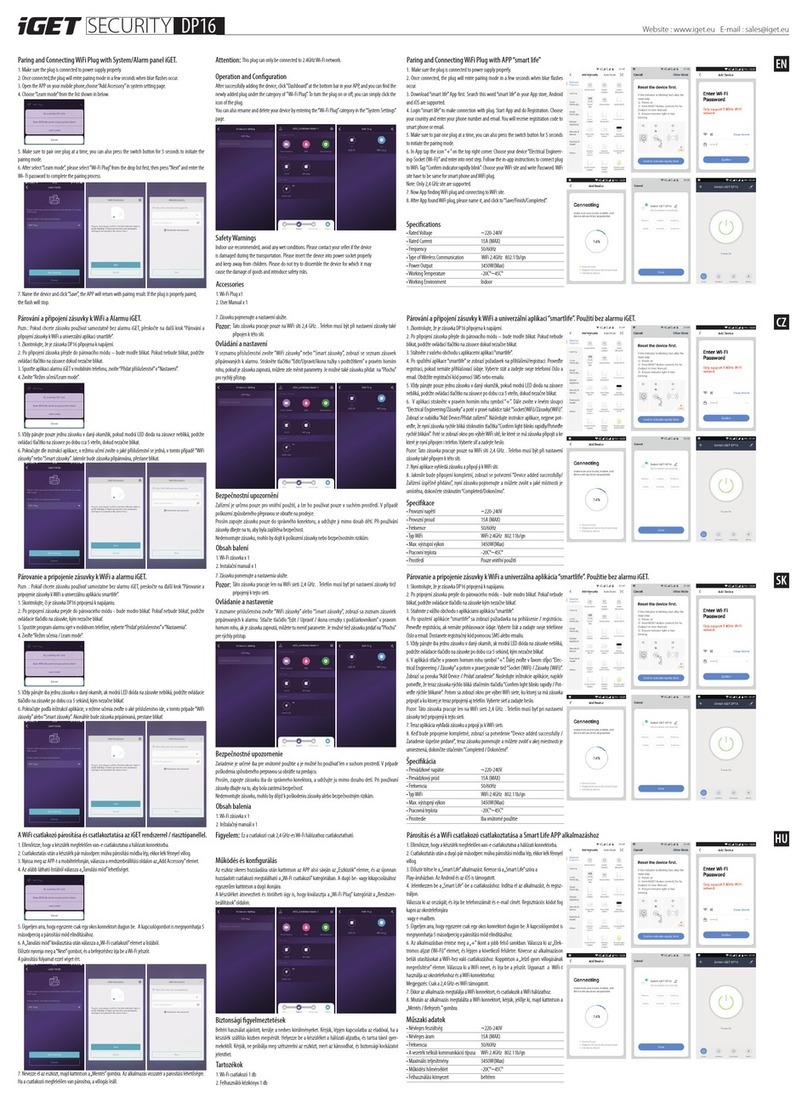
Iget
Iget SECURITY DP16 Pairing and Connecting
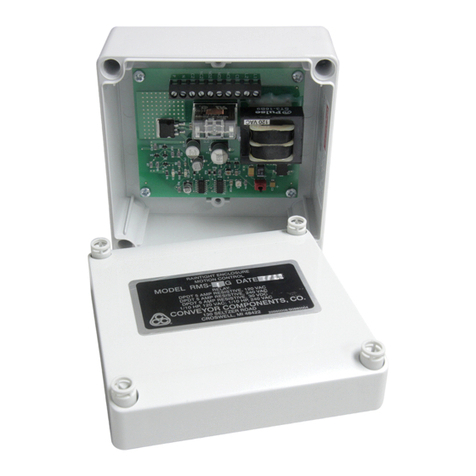
Conveyor Components Company
Conveyor Components Company RMS-8S installation instructions

IFM
IFM MFH operating instructions
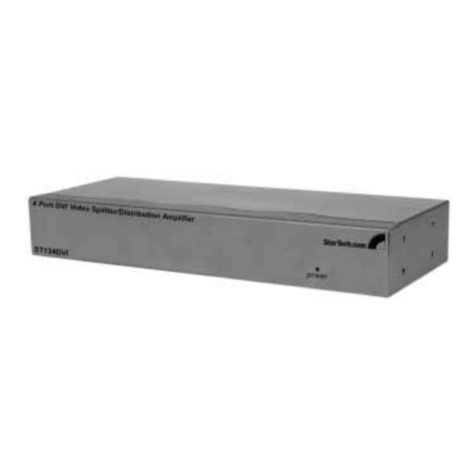
StarTech.com
StarTech.com ST124DVI Instruction guide
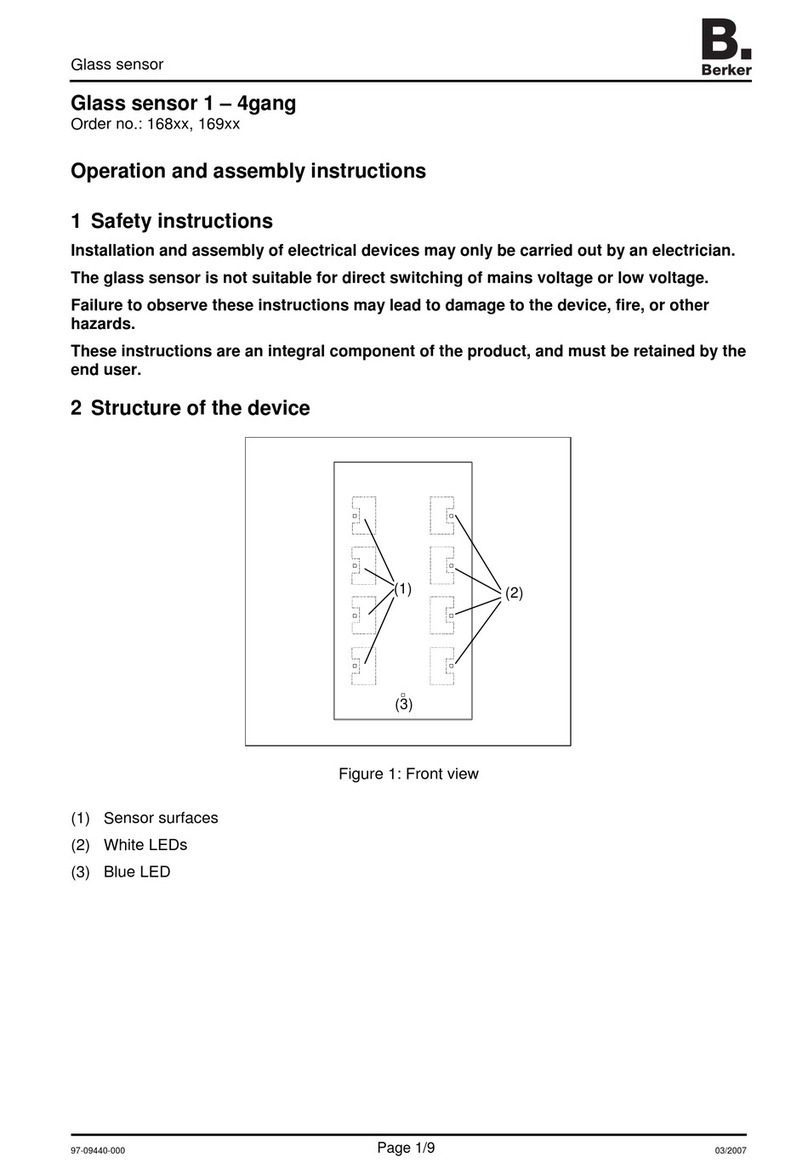
Berker
Berker 168 Series Operation and assembly instructions
